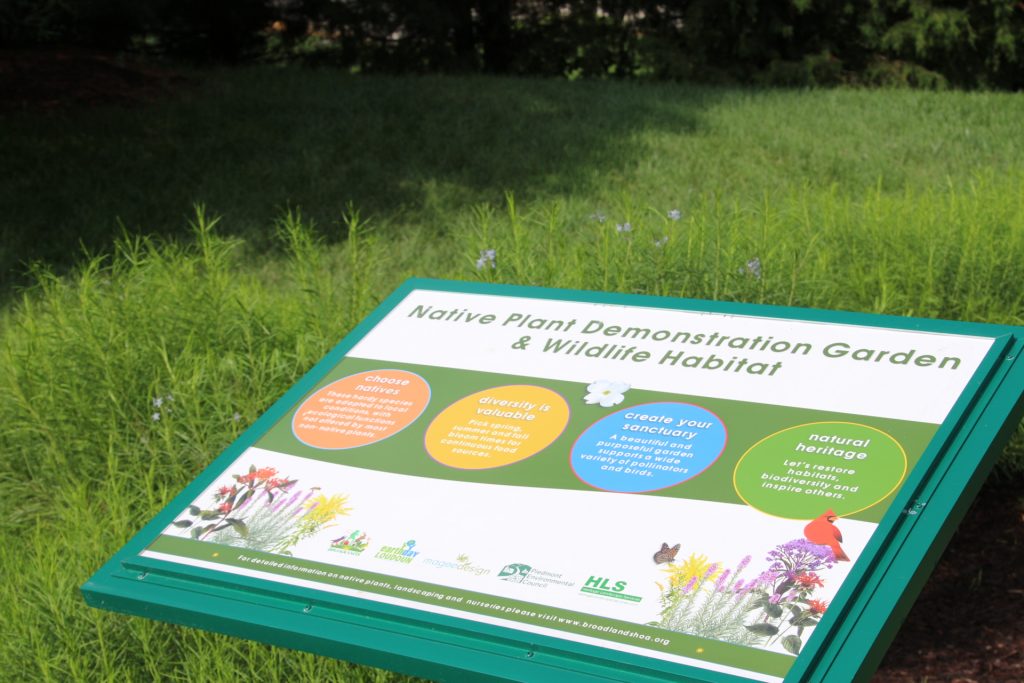Purpose
- Restore a common area that is currently covered with lawn into a garden
- Display Virginia native plants for residential application
- Create an inviting garden for families to explore and experience the difference
- Demonstrate the beauty and hardiness of Virginia native plants
- Provide an outdoor environment for schools in the area for lessons on wildlife habitats
- Provide a habitat for bird and/or butterfly watching
- Provide a resource for seed collection
Benefits
Water Conservation
Established gardens with native plants will require less time to maintain, less watering, less chemical use and will cost less in the long run.
Demonstration
Residents are able to see the types of plants that grow well in our area.
The garden can be used as an outdoor classroom to visit with students to teach about habitats and ecology.

Virginia natives are often overlooked by home gardeners in favor of exotic imports. Many exotic plants do indeed thrive in our environment because of a lack of natural check & balances, often out-competing native species for resources, and becoming invasive plants that cause billions of dollars in harm to our environment. These plants often provide little or no sustenance for our wildlife companions, reducing biodiversity and straining our ecological web of life here in Virginia.
The future of landscape design calls for a resolution of these two differing criteria at work here — conventional landscape design criteria versus the need for habitat restoration with native plants and zero chemicals. Where the mistake is being made is trying to shoehorn habitat restoration goals into the conventional aesthetic criteria of landscape design.
Habitat restoration refers to projects meant to replenish an ecosystem‘s natural resources following natural or man-made damage. In some cases, habitat restoration is critically important to the survival of native species, the integrity of soil or water, and the continued existence of a natural ecosystem. Our goal is to repair our ecological footprint. Engaging in habitat restoration of any kind will help ensure the future of ecosystems that have existed before us.
This project supports the community’s commitment to enhance and maintain wildlife habitats. Broadlands became the 25th Certified Community Wildlife Habitat™ by National Wildlife Federation in February 2008.
During the September 2012 board meeting, Broadlands Home Owners Assoc. has approved the design by John Magee, a landscape designer located in Loudoun County who has been nationally recognized and seen in gardening magazines along with having had a special appearance as a native plant expert on Animal Planet’s “Backyard Habitat” program.
Please visit the following links for studies and additional information for the benefits of these types of landscaping practices for the homeowners, communities, and the environment.
Virginia Tech Virginia Cooperative Extension
Benefits of Sustainable Landscaping – University of Minnesota

